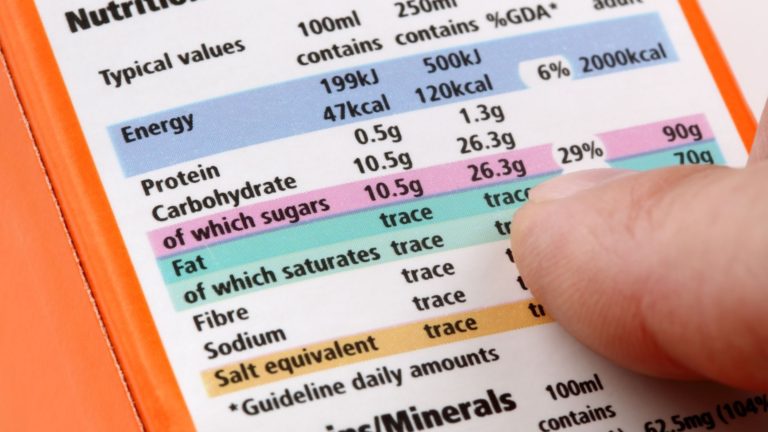
ALIMENTAÇÃO E IMUNIDADE
Qual o relação dos alimentos que a gente consome diariamente com a nossa imunidade?

Uma das perguntas que eu mais recebo dos meus pacientes e também de quem me acompanha nas redes sociais é:
“Bruno, como eu faço pra escolher um bom suplemento de Whey Protein?”
Por mais simples que pareça essa pergunta, na verdade – escolher um bom suplemento de Whey Protein – não é uma tarefa fácil nem mesmo para quem já está habituado a comprar, principalmente, devido a grande diversidade de produtos que existe atualmente.
Por um lado, isso é algo muito positivo, tendo em vista que essa maior variedade de marcas aumenta a concorrência, e com isso, os custos acabam ficando (um pouco) mais baixos.
Ao mesmo tempo, quanto mais possibilidades surgem, maiores são as dúvidas geradas com relação a escolha de um bom produto pelo consumidor.
As diversas opções de Whey Protein acabam se tornando um verdadeiro labirinto para quem não entende muito bem sobre algumas questões específicas relacionadas a este suplemento.
Além disso, infelizmente, muitos produtos que são comercializados não apresentam uma boa qualidade.
Essa situação fica ainda pior se considerarmos o cenário de fiscalização e o controle de qualidade desses produtos que é realizado em nosso País.
Aqui no Brasil, suplementos em pó são isentos de fiscalização.
Por incrível que pareça, o órgão responsável por esse tipo de controle (ANVISA), libera a venda do produto de acordo com o primeiro registro que é fornecido pela marca/empresa, não havendo nenhuma análise posterior ou periódica referente aos demais lotes que são comercializados.
Isso faz com que algumas marcas lancem o primeiro lote do produto com uma proteína de melhor qualidade para conseguir passar na fiscalização e apresentar essa informação no rótulo da embalagem.
Contudo, após a comercialização desses primeiros lotes, a matéria-prima inicial acaba sendo substituída por uma de menor custo, e consequentemente, de pior qualidade, sem que ocorra a alteração dessas informações na embalagem.
E como o produto já passou pela fiscalização, caso ele seja consultado no site da ANVISA, irá constar o registro da matéria prima que foi utilizada inicialmente.
É revoltante isso né? Eu sei. Imagina como eu me sinto sendo nutricionista…
Além disso, não existe um laudo de certificação de qualidade nacional ou internacional para o Whey Protein como ocorre para a avaliação de alguns outros suplementos como o Ômega 3, por exemplo, que possui o IFOS (International Fish Oil Standards Program), um certificado que é emitido mundialmente para atestar a qualidade dos suplementos de ômega-3.
Contudo, mesmo diante desses fatos, se você prestar atenção em alguns detalhes importantes que eu vou te explicar, será totalmente possível escolher um bom suplemento de Whey Protein que atenda às suas necessidades, sem pesar muito no bolso e, sem comprometer a tua saúde.
Nós vamos conversar melhor sobre esses detalhes a partir de agora…

“O Whey Protein é um suplemento muito versátil que pode ser consumido por pessoas que possuem diferentes objetivos e finalidades. Sendo assim, vale a pena você parar alguns minutos do seu dia e avaliar com calma as opções existentes pra fazer a melhor escolha possível de acordo com às suas reais necessidades.”
O primeiro ponto que você precisa considerar pode parecer meio óbvio, mas ele passa despercebido pela grande maioria das pessoas: qual é o seu objetivo ao consumir um suplemento como Whey Protein?
Sim! Todos esses objetivos são perfeitamente atendidos pela suplementação de Whey Protein, desde que você utilize um suplemento de qualidade e faça a utilização da forma adequada de acordo com o que você realmente precisa.
Ter o seu objetivo bem claro é o primeiro passo para que você consiga definir qual o melhor Whey Protein.
Por exemplo: se seu foco for emagrecimento, talvez seja mais indicado que você use um Whey Protein Isolado, tendo em vista que essa versão apresenta uma composição nutricional com mais proteínas e com menos carboidratos do que as versões concentradas.
Isso não significa que um Whey Protein Concentrado seja ruim, longe disso. Essa versão também pode ser uma boa opção, principalmente, se a porção de carboidratos contida no produto estiver calculada dentro do seu planejamento nutricional (dieta).
Já para pessoas que possuem alguma intolerância a lactose ou desconfortos gastrointestinais, existe a versão hidrolisada, que nutricionalmente, não possui praticamente nenhuma diferença do Whey Protein Isolado, mas apresenta uma melhor digestibilidade pela questão da proteína passar por um processo de quebra (hidrólise) a mais do que nas versões concentradas e isoladas.
Porém, como o preço do Whey Protein Hidrolisado é bem maior do que as versões concentradas e isoladas, essa versão, normalmente, não possui um bom custo-benefício.
Um ponto que algumas pessoas levam em consideração na hora de escolher um Whey Protein é o sabor do produto.
Contudo, na grande maioria das vezes, o Whey Protein “mais docinho” não é o que possui a melhor qualidade nutricional.
Isso acontece, porque pra melhorar o sabor do produto, as empresas adicionam ingredientes como açúcares, adoçantes artificiais, aromatizantes entre outros aditivos que não são nem um pouco interessantes para a nossa saúde.
Por isso, que mais uma vez: ter seu objetivo bem claro é essencial para você encontrar um suplemento de Whey Protein que atenda às suas necessidades.
Se o seu foco for saúde, o ideal é buscar um Whey Protein que tenha um sabor agradável, mas que ao mesmo tempo, seja o mais natural possível e isento de aditivos químicos e ingredientes de baixa qualidade na composição.
Até porque, hoje em dia é bem difícil você encontrar um Whey Protein que possua um gosto ruim, mas às vezes, ele não vai ser tão doce.
Portanto, se você quer emagrecer ou ganhar massa muscular, mas também se preocupa com a saúde, procure um Whey Protein que possua ingredientes mais naturais e menos artificiais.
Uma das razões pelas quais escolher um Whey Protein de qualidade gera tanta dificuldade, é em função da grande variedade de versões de proteína do soro do leite existentes no mercado.
Isso porque a preocupação não é somente com a marca, mas também com o tipo de proteína que vai ser encontrada dentro do produto.
Basicamente, existem três tipos de Whey Protein:
Talvez você já tenha ouvido falar que: “um suplemento só é bom se for importado.”
Embora essa afirmação não seja 100% verdadeira, se tratando especificamente de matéria-prima para a fabricação de Whey Protein, de fato, as melhores fabricantes são de fora do Brasil (pelo menos, por enquanto).
Exatamente por isso, que quase todas as marcas nacionais importam sua matéria-prima de fora do País.
Pra você ter uma ideia, mais de 90% dos suplementos de Whey Protein disponíveis no mercado brasileiro são fabricados com matéria-prima importada.
Mas não se engane em achar que o nome da marca tem que ser americana ou que rótulo precisa estar em inglês para ser um bom produto, longe disso.
Até porque, algumas marcas nacionais chegam a ser melhores do que muitas marcas importadas.
Como essa informação é super positiva para os produtos de boa qualidade, marcas confiáveis gostam de divulgar quem é o seu fornecedor de matéria-prima, especialmente aquelas que realmente estão comprometidas em entregar um produto de boa qualidade.
Apesar de não existir um órgão fiscalizador específico responsável pela emissão de um laudo que ateste a qualidade do produto, todas as grandes marcas possuem um laudo técnico da matéria-prima que é utilizada.
Através desse laudo você consegue identificar se a matéria-prima utilizada na fabricação do produto possui uma boa qualidade.
Isso deve ser um hábito no momento da compra de Whey Protein, pois para cada lote do produto, existe um laudo técnico específico.
Ao saber qual é a empresa fornecedora da matéria-prima para o Whey Protein que você está pensando em comprar, é possível pesquisar a procedência da empresa e a qualidade da sua matéria-prima.
A empresa dinamarquesa Arla e a irlandesa Glanbia são as duas maiores referências de empresas fornecedoras de matéria-prima para um suplemento de Whey Protein de excelente qualidade.

A composição nutricional é um fator importantíssimo na hora de escolher um Whey Protein de boa qualidade.
Quanto menos aditivos químicos ele possuir na lista de ingredientes, melhor será para os seus resultados e, principalmente, para a sua saúde.
Sendo assim, evite comprar um Whey Protein que contenha ingredientes como maltodextrina, dextrose, açúcar, corantes, saborizantes, aromatizantes, conservantes e adoçantes artificiais.
Essas informações referentes a composição e quantidade dos ingredientes do produto, são descritas no rótulo na ordem de quantidade, começando sempre do ingrediente que possui a maior quantidade, para o que possui a menor.
Isso significa, que quanto antes esses nomes aparecerem na lista de ingredientes, maior será a quantidade de aditivos químicos presentes na composição do produto.
Isso não vale apenas para o Whey Protein ou para algum outro suplemento, mas sim, para todos os produtos que são comercializados pela indústria alimentícia.
Na hora de escolher um bom suplemento de Whey Protein, certamente, você também levará em consideração o valor do produto.
Mas a parte boa, é que não necessariamente um suplemento mais caro, possui uma melhor qualidade nutricional.
Com certeza, se você for em uma loja de suplementos, na grande maioria das vezes, o vendedor vai te oferecer o produto de maior valor, mas isso não será pela melhor qualidade, mas sim, pela maior comissão que ele irá receber.
A verdade, é que o melhor suplemento de Whey Protein é o que foi produzido com uma matéria-prima de qualidade e que possui uma menor quantidade de aditivos químicos na composição.
Além disso, para os mais preocupados com o meio ambiente, hoje em dia já existem as marcas “clean label”, que além de possuírem ingredientes naturais, também fazem questão de extrair a matéria-prima dos seus produtos cuidando do tratamento e da saúde dos animais envolvidos na produção do leite que e usado para fabricar o Whey Protein.

Escolher um bom suplemento de Whey Protein, pode até parecer uma tarefa difícil, mas eu tenho certeza, que se você levar em consideração essas dicas, esse processo vai ficar bem mais fácil de ser realizado.
Além disso, o Whey Protein é um suplemento super versátil, que pode ser consumido por pessoas que possuem diferentes objetivos e finalidades.
Então, vale a pena você parar alguns minutos do seu dia pra avaliar com calma as marcas de suplementos existentes no mercado pra fazer a melhor escolha possível, de acordo com às suas reais necessidades.
Lembre-se que – comprar um suplemento se baseando apenas no preço não é uma decisão muito inteligente, pois dependendo do produto escolhido, o “barato” pode acabar custando muito mais caro do que um suplemento que possui uma melhor qualidade.
Espero ter ajudado com essas informações…
Conte comigo sempre que você precisar!
Bruno Motta

Qual o relação dos alimentos que a gente consome diariamente com a nossa imunidade?